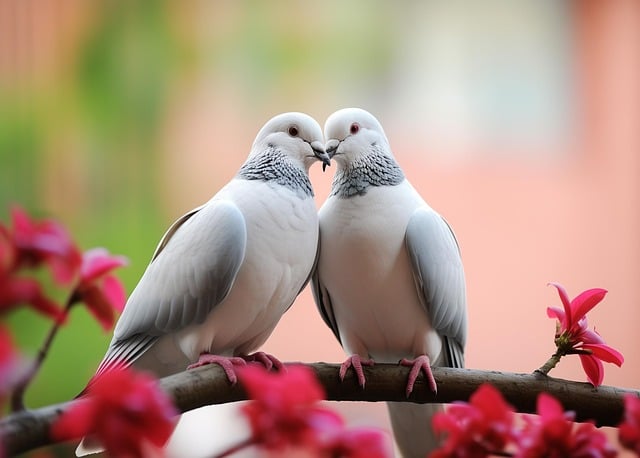February has arrived, and that means that Valentine’s Day is just around the corner. For many, this is a day to celebrate the romantic love shared with a partner, for others, it’s a day to celebrate the love of friends and family, and for some, it’s a day to enjoy the single life. With delicious food, flowers, and a cozy night on the menu, it’s a day many people look forward to. But why do we celebrate love in the middle of February? How did our modern Valentine’s Day traditions start? And what does it have to do with pest control? Well, much like the mysteries of love, the origins of Valentine’s Day are shrouded in unanswered questions. Fortunately, there are a few solid, and very interesting theories surrounding this lovely holiday, so keep reading to find out more. (And as for how it relates to pest control, the answer is more than just that The Bug Dude loves all our clients…though that is of course also true).

Lupercalia
The first theory on the list pertains to the celebration of love in mid-February and dates all the way back to ancient Rome circa 6th century B.C. On February 15th the Romans used to have a fertility festival celebrating both the god of agriculture (Faunus) and the Roman founders (Romulus and Remus). The festival began with the sacrifice of a goat and a dog, moved on to men taking to the streets with strips of the goat’s hide dipped in sacrificial blood and gently slapping women and crops with the goat’s hide, and ended with all the young women of the city putting their names into an urn, each to be chosen by one of the city’s bachelors to be paired with for the rest of the festival and potentially for the rest of their lives in matrimony. Though this festival is a far cry from our modern Valentine’s Day celebrations, a few vestiges remain, most notably the use of the color red, which can be traced back to the blood sacrifices made during this ancient celebration.
This festival was celebrated until the late 5th century A.D. when Pope Gelasius I abolished Lupercalia and installed a holiday commemorating the martyrdom of Saint Valentine instead. Though it’s likely that the Pope hadn’t intended for the day to remain a celebration of fertility and love, those tenets persisted, though in a much milder form of celebration.

Saint Valentine
If Lupercalia doesn’t feel like it’s a full fit for how we got to our modern Valentine’s Day celebrations, how about looking at how the day got its name? Well, the first issue you’ll encounter is that there are at least 3 Catholic saints named Valentine/Valentinus who were martyred, and there’s no way to know which one may have inspired the holiday. Even worse, there are 2 main stories as to why Valentine was martyred, and again no definitive answers.
The first story goes that during the 3rd century A.D., Valentine, who was a priest, disobeyed the marriage law enacted by Emperor Claudius II. The Emperor had outlawed marriage for young men, having concluded that single men made better soldiers. Valentine found the law unjust and performed marriages in secret, uniting many a young lover, until he was discovered and put to death.
The second story posits that Valentine was put to death after being discovered helping Christians escape Roman prisons. It’s said that during his imprisonment he tutored the blind daughter of his jailer and after they prayed together, God returned the girl’s sight. Before his death, he supposedly wrote her a letter (possibly due to falling in love with her) and signed it “From your Valentine.”
Though the events surrounding the Catholic saint who inspired Valentine’s Day are cloudy at best, the tales speak to the value of love and helping others; and thanks to these romantic tales, by the Middle Ages, Saint Valentine was one of the most popular saints in France and England.

Chaucer
While both of the above theories show merit, they don’t exactly explain how we got to our modern Valentine’s Day. That’s where Chaucer might come in. Though you probably know Chaucer best for The Canterbury Tales, his poem “Parlement of Foules” is one of the earliest known references linking Saint Valentine’s Day with the idea of celebrating romantic love. If Chaucer was the originator of this linkage, he may have chosen it because of the legend of Saint Valentine, or he may have simply chosen it because mid-February was the time when Britons of the era (14th century A.D.) believed spring began, and that coincided with Saint Valentine’s Day. Giving credence to the second idea is the fact that a large portion of the poem is devoted to birds choosing their mates, a sure sign of spring.

Lovebirds
Speaking of birds, perhaps the most appropriate Valentine’s Day animal out there is the aptly named lovebird. These small, colorful parrots are perhaps best known for the fact that they mate for life. This bond is so strong that after being separated for a time, they will feed each other to reconnect, and if one of the pair were to die, the remaining bird would exhibit behavior that could be described as depression. Though lovebirds are native to Africa, there are feral populations living in the southwest and San Francisco, and they are a somewhat common pet, so it might just be possible for you to say hi to a beautiful pair of lovebirds this Valentine’s Day, and not mean it metaphorically.

Not Lovebirds
While having a lovebird or 2 in your home as a pet might be a lovely idea, what happens if you have unwanted birds finding their way into your home or commercial building? That’s when you need to call The Bug Dude at 817-354-5350 to get an expert technician out to assess the situation, put together a plan to remove the current bird problem, and discuss deterrent or exclusion options for the future. Our technicians have experience dealing with tricky avian situations and will always try to find you the safest and most effective methods to handle any bird problems you may be encountering.

Valentine Pests?
But what if you’re sick of all the lovey-dovey stuff? (by the way, the dove is yet another bird associated with love, this time because of a link to the ancient Greek goddess Aphrodite) Well, if that’s the case, consider naming a cockroach after your Ex. Yep, that’s a real thing, and it’s done in Texas at the San Antonio Zoo through their Cry Me A Cockroach Fundraiser.
Whatever the reason we celebrate Valentine’s Day, and however you are going to observe the holiday, everyone here at The Bug Dude would like to send you lots of love and gratitude for helping us get to our 45th anniversary this year!
Further Reading:
“History of Valentine’s Day” – History.com Editors, History.com, A&E Television Networks, LLC
“The Origins of Valentine’s Day: Was it a Roman Party or to Celebrate an Execution?” – Liam Stack, The New York Times
“14 Fun Facts About Lovebirds” – Helen Thompson, Smithsonian Magazine
“7 Unique Valentine’s Day Traditions” – Sara Kettler, History.com, A&E Television Networks, LLC
“Lupercalia” – History.com Editors, History.com, A&E Television Networks, LLC
Author Bio: Alissa Breach has been gaining knowledge and experience around pest control concerns over the last 14 years while working for Mid-Cities Pest Control. She has a creative writing BA from UW-Madison and is always pursuing new and interesting writing projects.




